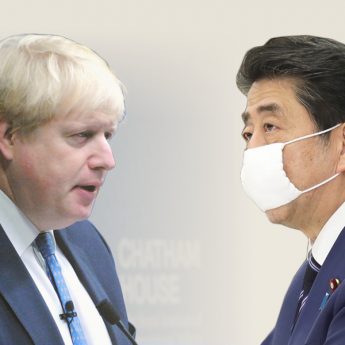I recently reviewed two books on the subject of class and poverty in the UK: Poverty Safari by Darren McGarvey and Social Class in the 21st Century by Mike Savage and others.
The brilliantly entitled Poverty Safari is written in the first person by an author who has, himself, experienced genuine poverty. True to his calling as a rapper as well as writer and social commentator, his style is sharp and rhythmical, his insights real and vivid. The objective of “understanding the anger of Britain’s underclass,” which is the subtitle of this book, is well served by his writing.
Social Class in the 21st Century is a more scholarly work by a group of social scientists based on the The Great British Class Survey conducted by the BBC. The authors helped design this web survey and analysed the results during 2011–13. The book relates the findings of that research. According to the authors, the UK is now a society consisting of seven classes:
- Elite
- Established middle class
- Technical middle class
- New affluent workers
- Traditional working class
- Emerging service workers
- Precariat
The last is a term concocted by joining “precarious” and “proletariat”. There is a deep chasm between the bottom layer of the precariat and all the rest. The top elite layer is a members’ club strictly inaccessible to non-members. Sandwiched between the top and bottom echelons are the other five classes. The boundaries of these tend to be somewhat blurred. People who look as though they belong firmly in the established middle class may turn out to be new affluent worker types. Those who feel comfortably settled in the technical middle class may suddenly find themselves tumbling down into the emerging service worker layer, having to flit from gig to gig to make a living.
Shifting society
The two books indicate how complicated and dark an issue class has become in British society. Things were much simpler back in the 1960s, when I was growing up there. We had the upper class, middle class and working class. The lines of demarcation were very clearly defined. Everybody knew where they belonged. The three classes looked at each other over their respective fences in peaceful return.
All this makes me wonder what the class situation is looking like in Japan at present. Reflecting on history, we see that the Edo Period had a firmly and deeply established class structure. There were samurai, farmers, craftsmen and merchants in descending order of status. Modernisation in the Meiji Period did away with the samurai class and Japan became a binary world of aristocracy versus commoners.
Post-war Japan developed into one of the world’s most class-free societies: no upper class, no underclass. We had all become middle class. Or so we thought. Or so it was until around about the turn of the century.
It was in the early few years of this century that books dealing with class issues suddenly started to become bestsellers in Japan. Everybody began to talk about the karyu-shakai (low society), the title of one of those bestsellers. People began to question the class-free Japan image.
Past is prologue
In 2008, Kani-kosen (The Crab Cannery Ship), a novel written in 1929, became phenomenally popular. It sold more than 500,000 copies—an unheard-of feat for a classic of this type. The book deals with the plight of workers subjected to totally inhuman exploitation on board a ship which also serves as a factory for canning crabs caught on the northern seas. The author, Takiji Kobayashi, is renowned as the foremost master in the world of proletariat literature. He would have loved the term precariat.
Literary commentators and social scientists marvelled at this novel’s dramatic comeback. Researches made it clear that the book-reading public was empathising very strongly with the fortunes of the hapless crab ship workers.
Indeed, even the normally non-book-reading public was rushing to the bookshops to get a copy. The image of the slave-like situation of those hard labourers had totally caught the imagination of young Japanese working people who were feeling themselves being pushed further and further away from the class-free society into the underclass world of karyu-shakai.
Twelve years after the Kani-kosen boom, nobody now doubts that class-free Japan is a myth. It has no place in the Japanese psyche anymore. And there is every reason to believe that this change of mentality is well grounded in reality.
What Japanese society suffers from now is what I have taken to call poverty in affluence. Japan as a whole is a very affluent nation. And yet, in the midst of all this wealth, there are pockets of poverty into which people have fallen as a result of an increasingly competitive and hostile economic environment—a situation sure to be exacerbated by Covid-19. We may not have developed the seven-layered class structure of 21st-century Britain yet, and our underclass may not be quite as angry as that of the UK, but I fear we are following closely behind.







